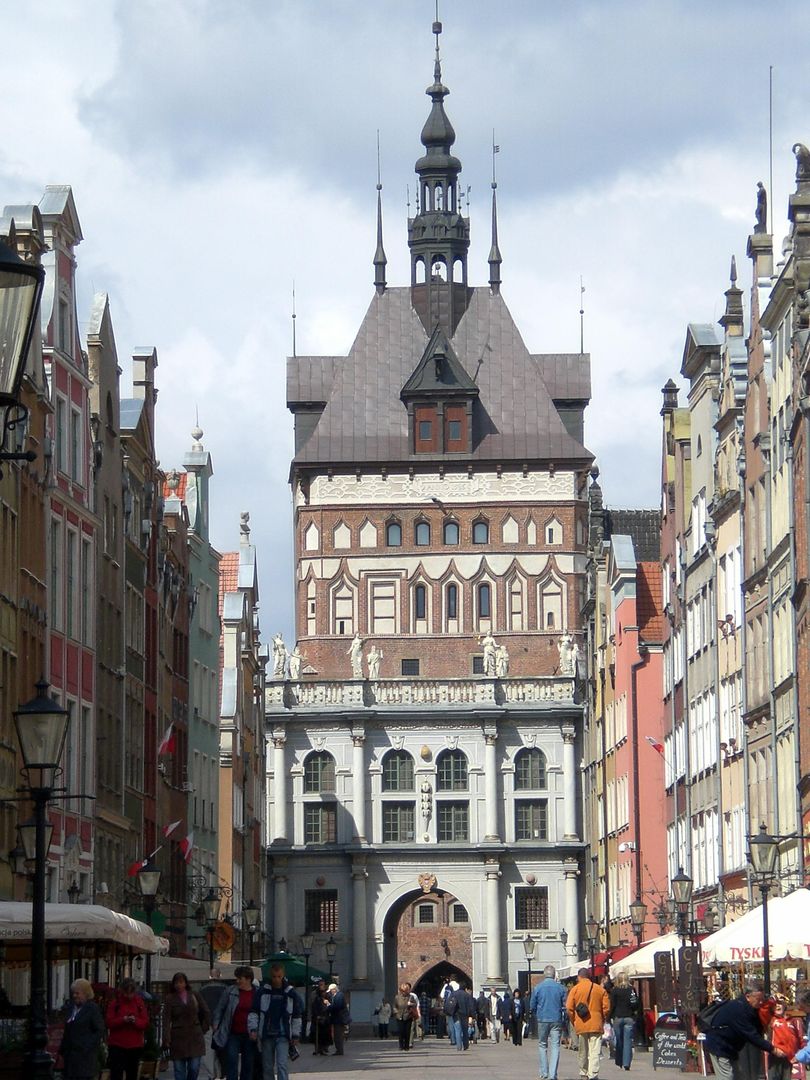Golden Gate in Gdańsk
6.98

Overview
The Golden Gate, also known as the Long Street Gate, is a historic city gate in Gdańsk, marking the beginning of Long Street (ulica Długa) and forming part of the Royal Route. It was completed in 1612, designed by architect Abraham van den Blocke, replacing an earlier medieval Gothic gate. Its architecture is executed in the Mannerist style with classical allusions, resembling a triumphal arch, featuring columns in the Ionic and Composite orders. The gate's gable is adorned with allegorical sculptures, originally carved by Piotr Ringering in 1648, which deteriorated over time and were replaced with a reconstruction in 1878. These figures represent the aspirations of the townspeople: Pax (Peace), Libertas (Liberty), Fortuna (Fortune), and Fama (Fame), as well as civic virtues: Concordia (Harmony), Iustitia (Justice), Pietas (Piety), and Prudentia (Prudence). The frieze of the gate bears an inscription from Psalm 122, calling for peace, along with a Latin motto emphasizing the importance of unity for the community's prosperity. Over the centuries, the gate served various functions, including housing the Royal School of Fine Arts in the 19th century. Destroyed in 1945, it was rebuilt in 1957. Today, it is managed by the Coast Branch of the Association of Polish Architects. The name "Golden Gate" is ahistorical, adopted after World War II. The Golden Gate not only constitutes a significant architectural element of Gdańsk but also symbolizes the city's rich history and culture, attracting tourists from around the world.
Location
2025 Wizytor | All Rights Reserved